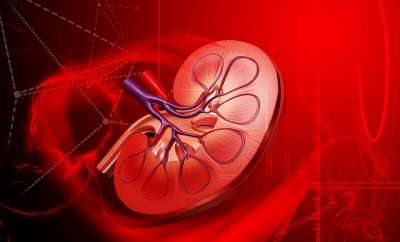Combining stem-cell therapy with anti-scarring agent may heal injured kidneys

Researchers have made a discovery that could see patients with kidney disease no longer having to resort to dialysis or kidney transplants.
Chronic kidney disease (CKD) can be caused by a number of factors, and results in permanent, irreversible scarring of the kidney leading to end-stage renal disease (ESRD). Once a patient has reached this point their only option is dialysis or transplantation.
Research led by Monash University scientists has shown for the first time the effectiveness of combining a stem cell-based therapy with an anti-scarring agent to reverse scarring and markers of kidney injury, reducing the need for dialysis or transplantation.
Associate Professor Sharon Ricardo, Department of Anatomy and Developmental Biology, said the researchers had discovered that adult stem cells, combined with a protein called serelaxin, could reverse scarring.
"Adult stem cells have proved promising for the treatment of a wide range of diseases, including kidney disease," she said.
"We decided to investigate how adult stem cells could help reduce the scarring effect. We demonstrated that adult stem cells and serelaxin on their own have a limited effect on reversing kidney scarring, yet when used in combination with serelaxin can provide significant protection from kidney damage."
Associate Professor Ricardo said the adult cells did not turn into kidney cells, rather they help the injured kidney repair itself.
"However, the potential of these stem cells is reduced in patients who have a lot of scarring due to the disease."
Associate Professor Chrishan Samuel, Department of Pharmacology, said serelaxin was currently undergoing phase III clinical trials to assess its ability to treat symptoms and end-stage mortality in patients with acute heart failure.
"We believe that by reducing the scarring associated with chronic kidney disease, serelaxin creates an improved environment for the administration of stem cells, and can directly improve the viability and therapeutic efficacy of introduced stem cells," he said.
PhD candidate Brooke Huuskes, Department of Anatomy and Developmental Biology, said the finding was important as kidney disease was increasing worldwide placing huge economic burden on health care systems.
"There is no cure for kidney disease, and alarmingly three out of four people on dialysis will die waiting for a kidney transplant, and even those who are lucky enough to receive a transplant often end up back on dialysis due to rejection or graft failure," she said.
Brooke, who had a kidney transplant in 2010, said it meant a lot to her to be able to do research into something that was very personal to her and that she was passionate about.
The research was published in The Journal of the Federation of American Societies for Experimental Biology.
















